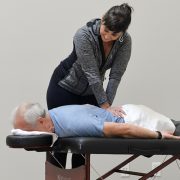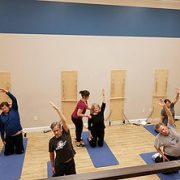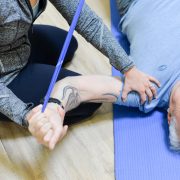Stressed out? Tips to Keep the Holiday Season Happy and Healthy
It’s the middle of December, which means we’re in full holiday swing. Although this is meant to be a time of celebration and joy, many people I speak with just can’t seem to avoid the stress. And it’s not just because we also happen to be dealing with a pandemic… although that’s definitely not helping! Unfortunately, stress levels tend to increase around this time every year. In our office, the phone is ringing off the hook right now from people tweaking their necks and backs. Why? Well, stress! Stress makes us move faster than we are inclined to — or slower than we’re inclined to — and it puts our nervous systems on high alert (otherwise known as “fight or flight”). It’s a recipe for both mental AND musculoskeletal aches and pains. But the good news is that it’s not as difficult as you think to combat stress and give yourself the happy and healthy holiday season you deserve.
Here are my favorite ways to combat stress any time of year, not just during the holidays or a pandemic:
1. Breathe
I know this might sound cliche, but breathing is one of your best friends when it comes to quickly reducing and interrupting stress. As little as 30 seconds can make a dramatic difference! When you breathe deeply it sends a message to your brain to calm down and relax. The best part is you can do this anywhere — in the car, at the office, while shopping, even in the bathroom. Although breathing may not eliminate stress permanently, it does interrupt it. And interruption is key when it comes to managing stress — both emotional and musculoskeletal. When you interrupt the ability for the cumulative forces of stress to accumulate, you decrease the toll it can have on your body and brain.
2. Practice Gratitude.
Did you know that gratitude helps lower cortisol levels in our bodies by about 23 percent? Prolonged stress causes elevated cortisol levels, which causes lots of different health problems such as heart disease and high blood pressure. Research shows that when we think about something we appreciate (i.e. practice gratitude), the parasympathetic nervous system (the calming one) is triggered. Our parasympathetic nervous system is responsible for returning the body to its automatic and natural rhythm. So when the parasympathetic nervous system is activated, your heart rate and cortisol levels lower — which is the opposite of what happens when you’re stressed out. Your sympathetic (fight or flight) and parasympathetic nervous systems work together in opposition, and can’t both be in charge at the same time. So when you consciously practice gratitude, you actively lower your stress!
3. Move!
Any kind of movement is going to help you control stress for a few reasons… First, it gets your blood flowing which contains endorphins — natural chemicals of the body designed to decrease pain AND stress. Second, movement helps to end the “flight or fight” response of the body. In ancient times, our fight or flight response protected us from danger (like a lion chasing us), by triggering us to run away. Running away (movement) would signal the end of the stress cycle caused by fight or flight by letting the brain know we were safe and out of danger. In our modern worlds, triggers of stress are not as obvious as a lion trying to eat us and tend to be more unassuming and cumulative. The end of the stress cycle is not always clear and can just keep going. Therefore, purposeful movement can help to decrease stress by physiologically ending your natural fight or flight response! Something as simple as walking can do this for you. But even jumping jacks or dancing in your living room can feel good and get your heart rate up enough to do the trick.
I hope these tips help you feel confident that it is indeed possible to combat any kind of stress you might be feeling right now. Stress is normal, but dealing with it longer than you should doesn’t have to be. And if you’re experiencing any kind of back, knee, hip, or neck pain that is adding to your stress – check out our FREE, expert-authored guides to dealing with all types of pain. Each guide is sent directly to your email inbox so you can reference them at any time!










